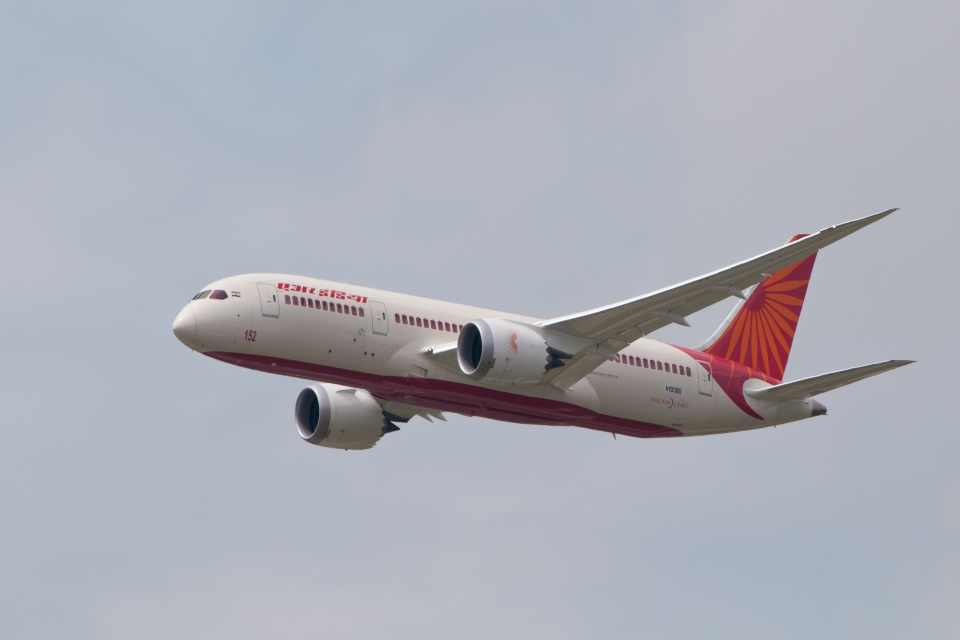Aviation
Air India-Vistara flights come as close as 100 ft, avoid mid-air collision over Mumbai by a few seconds

The incident reportedly took place on February 7 in the Mumbai airspace after 8 pm when Air India’s Airbus A-319 was flying from Mumbai to Bhopal as AI 631 and Vistara’s A-320 Neo was flying from Delhi to Pune as UK 997.
While the AI flight was at a level of 27,000 feet, the Vistara plane, with 152 passengers, had been assigned the flight level of 29,000 feet.
However, at 8 pm, the Vistara came down to 27,100 feet, after which the planes sped towards each other with a vertical separation of only 100 feet, the Times of India reported. Following this, the traffic collision avoidance system (TCAS) alarms went off in the respective cockpits, and the pilots managed to avoid the mid-air crash.
Meanwhile, the Directorate General of Civil Aviation (DGCA) has grounded two VIstara pilots over the incident. However, Vistara maintained that its pilots were told to drop the altitude to 27,000 and they “did not do so inadvertently.”
However, UK 997 came down to 27,100 feet – after which the two planes were flying towards each other with a vertical separation of just 100 feet. At that moment, the traffic collision avoidance system (TCAS) alarms went off in the cockpits of both the planes, and the pilots managed to avoid a midair collision. “At one point, AI 631 and UK 997 were 100 feet apart vertically and 2.8km laterally apart. They were just seconds away from each other. This is the most serious airport (accident) or near-miss in recent times,” said a source.

Aviation
COMAC Unveils Plans for the C929 to Rival Airbus and Boeing

After the success of China’s first C919 aircraft, the country is setting its sights on developing a larger plane. COMAC (Commercial Aircraft Corporation of China) has officially confirmed plans to build a widebody aircraft, marking a significant step in its aircraft lineup.
Traditionally, Airbus and Boeing dominate the widebody aircraft market, with decades of expertise in developing planes and engines capable of carrying heavy payloads. China, which currently relies on imported engines, is now aiming to challenge these giants with its own widebody jet, the C929, designed to compete with the Airbus A350 and Boeing 777.
American Airlines Is Looking for Flight Attendants: Apply Now
The C929 will be China’s first independently developed long-range widebody aircraft. It adheres to international airworthiness standards and boasts independent intellectual property rights. The baseline version is designed to seat 280 passengers and offers a range of 12,000 kilometers, catering to global demand for both regional and international air travel.
Russia, which also needs reliable narrowbody and widebody aircraft, could become a key customer for the C929. Additionally, China plans to target the broader Asian market as it continues to expand its aviation capabilities.
Close Call at Heathrow: BA Flight Narrowly Escapes Drone Collision
China’s aviation progress includes the ARJ21 (now called C909), a regional jet with 100 seats for shorter routes, and the C919, a narrowbody jet with 180 seats designed to rival the Boeing 737 MAX and Airbus A320. Both models have found increasing demand in the domestic market.
At China’s largest air show in Zhuhai, COMAC announced that Air China will be the launch customer for the C929 widebody jet, though details about order size and delivery timelines were not disclosed.
Other major deals announced by COMAC include:
- Hainan Airlines: Firm orders for 60 C919 and 40 C909 regional jets.
- Colorful Guizhou Airlines: 30 C909 jets, with 20 firm orders and 10 provisional agreements.
The C929, renamed from the CR929 after Russia withdrew from the joint development project in 2023, is expected to carry 280–400 passengers with a range of 12,000 kilometers, competing directly with Boeing’s 787 Dreamliner.
According to COMAC’s deputy general manager, Tong Yu, the first fuselage section of the C929 is expected by September 2027, with prototype test flights anticipated soon after.
-

 Aviation2 months ago
Aviation2 months agoMicrosoft Flight Simulator Raises $3 Million to Bring Back the An-225 Mriya
-

 Airlines2 months ago
Airlines2 months agoQantas Engineers Stage Walkout Over Cost of Living Concerns
-

 Airlines2 months ago
Airlines2 months agoQatar Citizens Can Travel to the United States Without a Visa
-

 Aviation2 months ago
Aviation2 months agoQatar Airways bans these new Electronic Devices on plane
-

 Airlines2 months ago
Airlines2 months agoJapan Airlines Rolls Out Free Domestic Flights to International Passengers
-

 Defence2 months ago
Defence2 months agoWhich Country Has the Largest Fleet of Fighter Aircraft?
-

 Airport2 months ago
Airport2 months agoWestern Sydney Airport Welcomes Its First Plane After 6 Years of construction
-

 Aviation2 months ago
Aviation2 months agoDid you know ? Once Boeing 747 carried 1088 passenger in 1991








